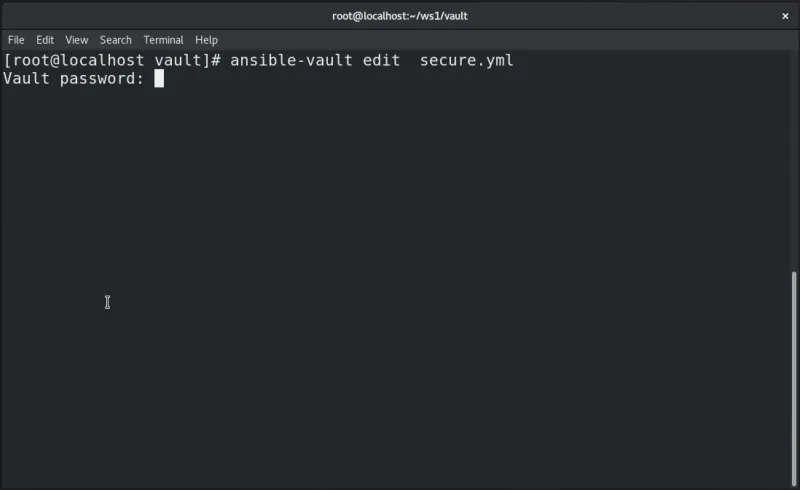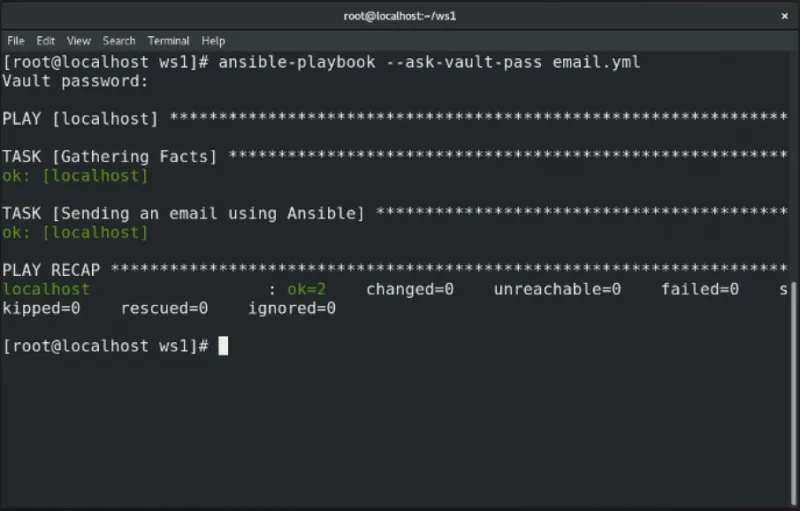Ansible is a configuration management tool. While working with Ansible, you can create various playbooks, inventory files, variable files, etc. Some of the files contain sensitive and important data like usernames and passwords. Ansible provides a feature named Ansible Vault that prevents this data from being exposed. It keeps passwords and other sensitive data in an encrypted file rather than in plain text files. It provides password-based authentication.
[ Editor Note: Ansible Vault is one tool that one might use, but not necessarily what most sysadmins run in production. Red Hat Ansible Automation Platform is enterprise-grade and it can also work with existing tools that most enterprises have. ]
[ You might also enjoy: Handling secrets in your Ansible playbooks ]
Ansible Vault performs various operations. Specifically, it can
- Encrypt a file
- Decrypt a file
- View an encrypted file without breaking the encryption
- Edit an encrypted file
- Create an encrypted file
- Generate or reset the encrypted key
Create an encrypted file
The ansible-vault create command is used to create the encrypted file.
# ansible-vault create vault.yml
After typing this command, it will ask for a password and then ask where to put your content. To check that the file has been encrypted, use the cat command.

The following command is used to create encrypted files with --vault id.
# ansible-vault create --vault-id password@prompt vault.yml

Editing the encrypted file
If the file is encrypted and changes are required, use the edit command.
# ansible-vault edit secure.yml


Decrypting a file
The ansible-vault decrypt command is used to decrypt the encrypted file.
# ansible-vault decrypt secure.yml

Decrypt a running playbook
To decrypt the playbook while it is running, you usually ask for its password.
# ansible-playbook --ask-vault-pass email.yml

Reset the file password
Use the ansible-vault rekey command to reset the encrypted file password.

Here is the email.yml file contents:
---
- hosts: localhost
vars_files: secret.yml
tasks:
- name: Sending an email using Ansible
mail:
host: smtp.gmail.com
port: 587
username: 500069614@stu.upes.ac.in
password: "{{ p }}"
to: mrsarthak001@gmail.com
subject: Email By Ansible
body: Test successful
delegate_to: localhost
[ Need more on Ansible? Take a free technical overview course from Red Hat. Ansible Essentials: Simplicity in Automation Technical Overview. ]
Wrap up
In this article, you learned about Ansible Vault, which is an Ansible feature that helps you encrypt confidential information in a file without compromising security. You also learned about decrypting files, editing encrypted files, and resetting Ansible Vault passwords. This feature is especially useful if you have some confidential data that you want to secure and prevent from being publicly exposed.
Remember that Ansible Vault is generally viewed as a tool for junior-level sysadmins and is not considered to be enterprise-grade. For an enterprise solution, refer to Red Hat Ansible Automation Platform.
About the author
Sarthak Jain is a Pre-Final Year Computer Science undergraduate from the University of Petroleum and Energy Studies (UPES). He is a cloud and DevOps enthusiast, knowing various tools and methodologies of DevOps. Sarthak also Mentored more than 2,000 students Regarding the Latest Tech trends through their community Dot Questionmark.
More like this
Getting started with socat, a multipurpose relay tool for Linux
Data-driven automation with Red Hat Ansible Automation Platform
Technically Speaking | Taming AI agents with observability
You Can’t Automate Cultural Change | Code Comments
Browse by channel
Automation
The latest on IT automation for tech, teams, and environments
Artificial intelligence
Updates on the platforms that free customers to run AI workloads anywhere
Open hybrid cloud
Explore how we build a more flexible future with hybrid cloud
Security
The latest on how we reduce risks across environments and technologies
Edge computing
Updates on the platforms that simplify operations at the edge
Infrastructure
The latest on the world’s leading enterprise Linux platform
Applications
Inside our solutions to the toughest application challenges
Virtualization
The future of enterprise virtualization for your workloads on-premise or across clouds
